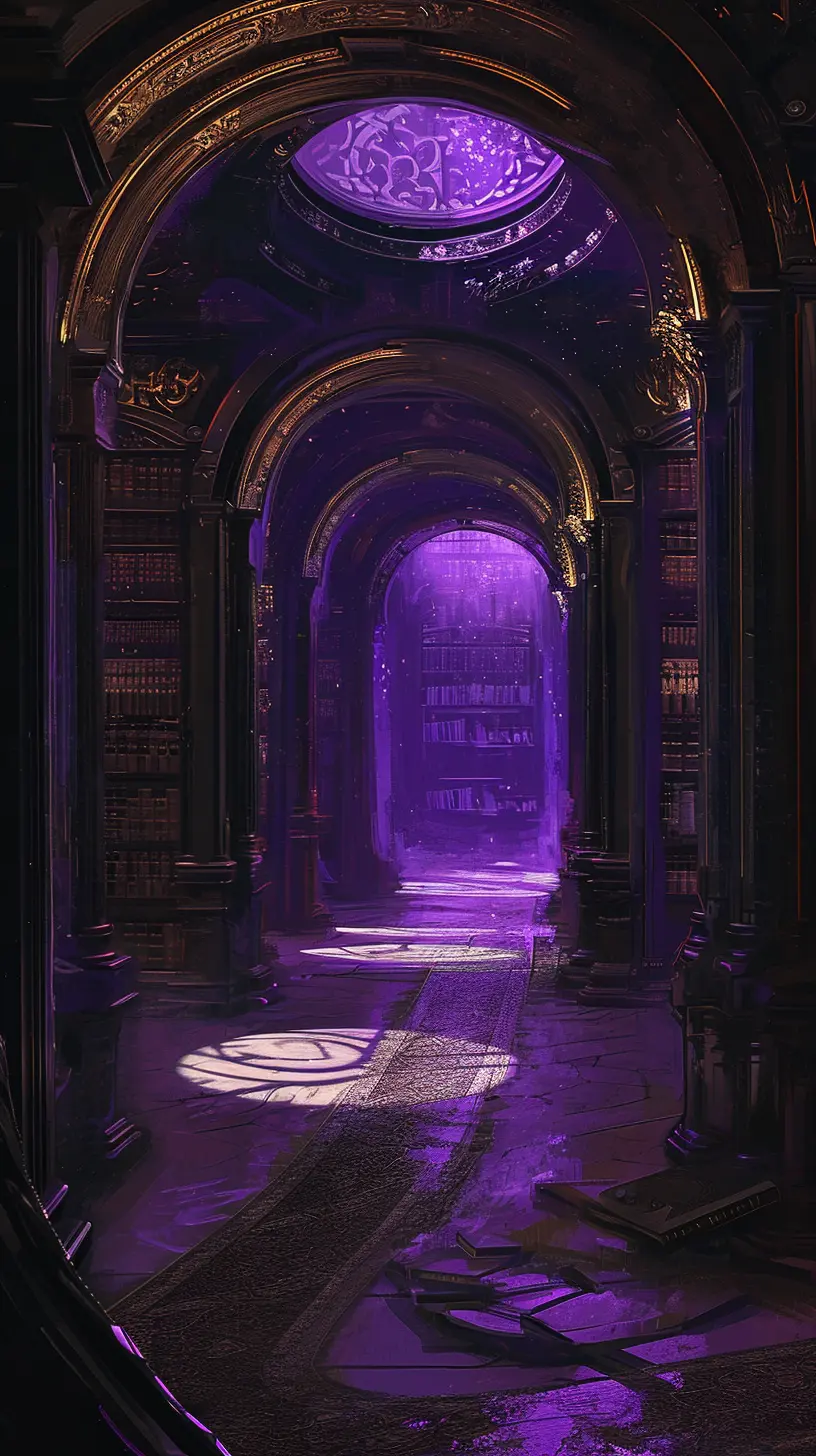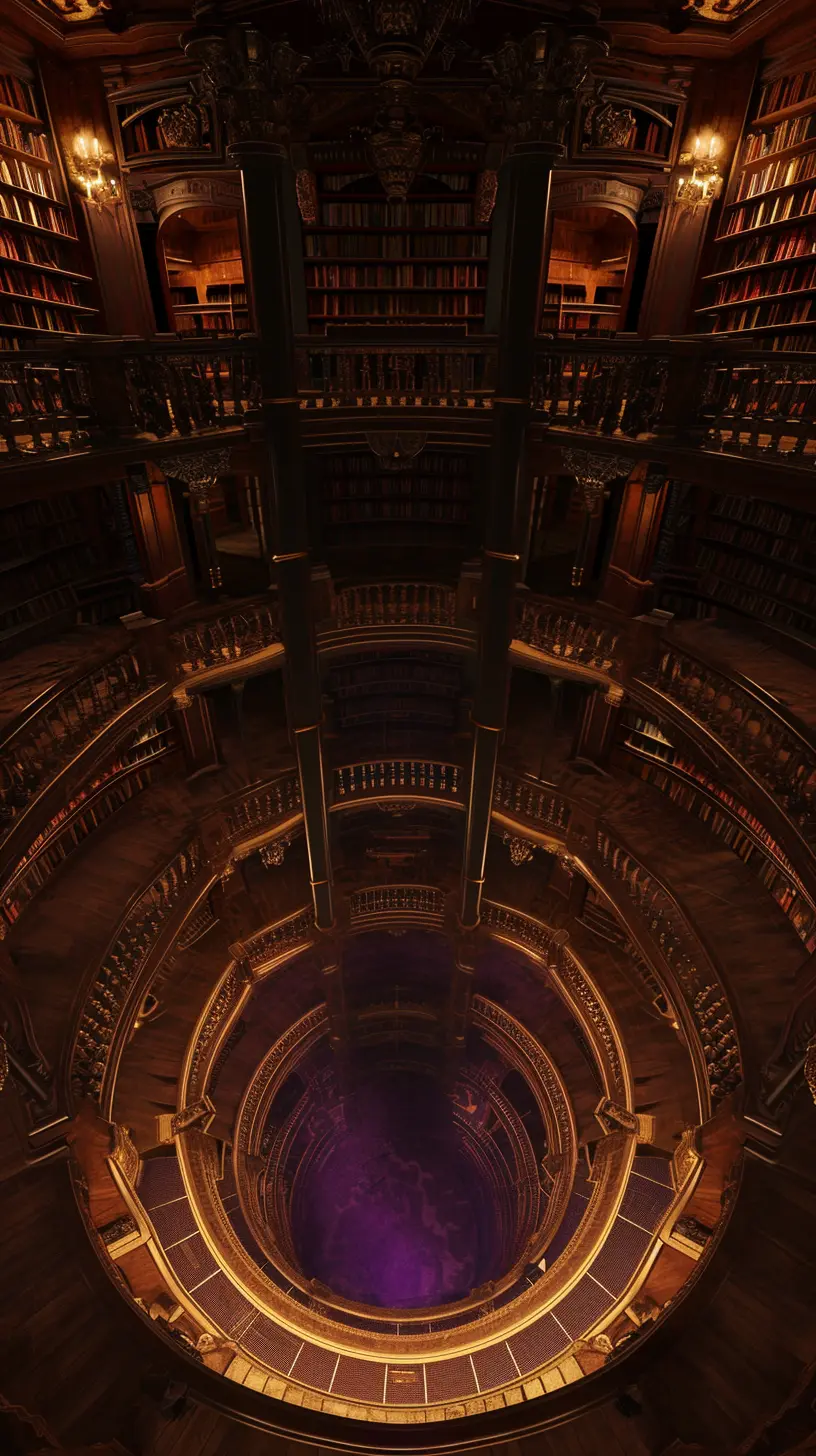Endless Archives
Truly unending, they say it is.. books that descend beyond sight, beyond thought.The Endless Archives - sometimes known as the Endless Archive, or as the Wuxian Archive - are a major subterranean repository of knowledge located in the heart of Liangxin, Yulan Sheng. The structure's exact origins are unknown, but it seems to have persisted in some form since the Worldrend, if not also prior to that most terrible of disasters. Its presence is a secret to most, due to the dangers of what may be found in its many pages. Notably, attempts to destroy the Archives may succeed, but only temporarily. Through some strange means, the Archives seem to always return - on the exact spot of their destruction, and always in similar form.
In 5623, in the wake of a strange corruption throughout the continent, a group of adventurers known as the Lost Ones - reportedly mostly Champions - entered the depths of the Archives alongside the Galasthin-sponsored research squad, the Starcrowned, and the Dreamer priestess Jinne.
They uncovered the presence of the Unbroken March within, and subsequently sundered the Shard - though not without experiencing traumatic time dilation, and not without three true deities being sacrificed in the attempt in one of the worst calamities since the Worldrend.
In the aftermath, many questions have been raised about the truth of all written down in the Archives and their vicinity.
Countless texts across countless eras seem to have been twisted by the Shard, to the extent that all written history from central Xin-Jiyu - and potentially beyond - must be studied carefully.
History
Long ago, when gods walked upon the soils of Istralar as men, a deity lived at the heart of the Great Wagon in a humble tower. Men and women came from afar to beg for divine succor or beseech him for fragments of his great knowledge, and he gave freely to them so they might share it with others.It is said that the city of Liangxin's precursor was laid out to mimic the wheel representative of a healer deity's medicine, though the exact reason for why this might be has long since been lost to time. The Five Heavenly Bridges that span the city's borders are the most permanent lingering remnant of this ancient myth, though they are but replicas of what the myth decreed, arranged approximately where the city's diviners imagined the bridges to have been.
Rare instances of preserved information from the Era of the Divine suggest that the wheel held an additional component now absent from modern Liangxin: a central tower dedicated to the deity himself, supposedly in physical form.
Though the manifestation of a true god in this era was impossible, it is nonetheless likely that he could have sent a Herald, Champion, or constructed avatar in his place. Some scholars also posit that these writings are from even earlier - from the First Era, prior to the First Divine War. However, this is extremely unlikely due to the condition of the findings.
Writings from the early First Millenia indicate a distinct lack of this tower, instead speaking of a great wealth of knowledge secured in its place in what was known as the Endless Archive.
In the few pictographs and descriptions found in reasonable condition, that ancient central tower is depicted as a near-palatial building lush with rich decor from many corners of the world - a surprise, considering the state of trade and relations in those days.
Behind his back, his fellow deities derided him. "Why would the Grandmaster of Medicine tell all he knows to mortals?" they would mutter, as their faithful descended into war.
Founding Date
Mid-2000s (estimated; current form only)
Alternative Names
the Wuxian Archive, the Endless Archive
Type
Library
Parent Location
Owning Organization
Tianlong has been missing for three moons! He spent the past five praising our Lord for granting us our great understanding of His works, and swore he knew a way to reveal what we, in our foolishness, had lost. His effects - those not upon him - were found by the Heavenly Bridge of Earth, but there is no other sign of him. Our Master is furious!









The idea of a shard corrupting all the books makes me hurt in the same way the burning of the Library of Alexandria does. What an interesting place, though.
Explore Etrea
All of the Shards have had some awful impact on the world, but man, the March has probably had the worst and most enduring long-term impact. Only written work created after its destruction can be definitively confirmed as real :( Especially bad when you consider Shards can theoretically reach further than the area within their direct control, and likely have moved around at times... this thing has impacted the *world*.
welcome to my signature! check out istralar!